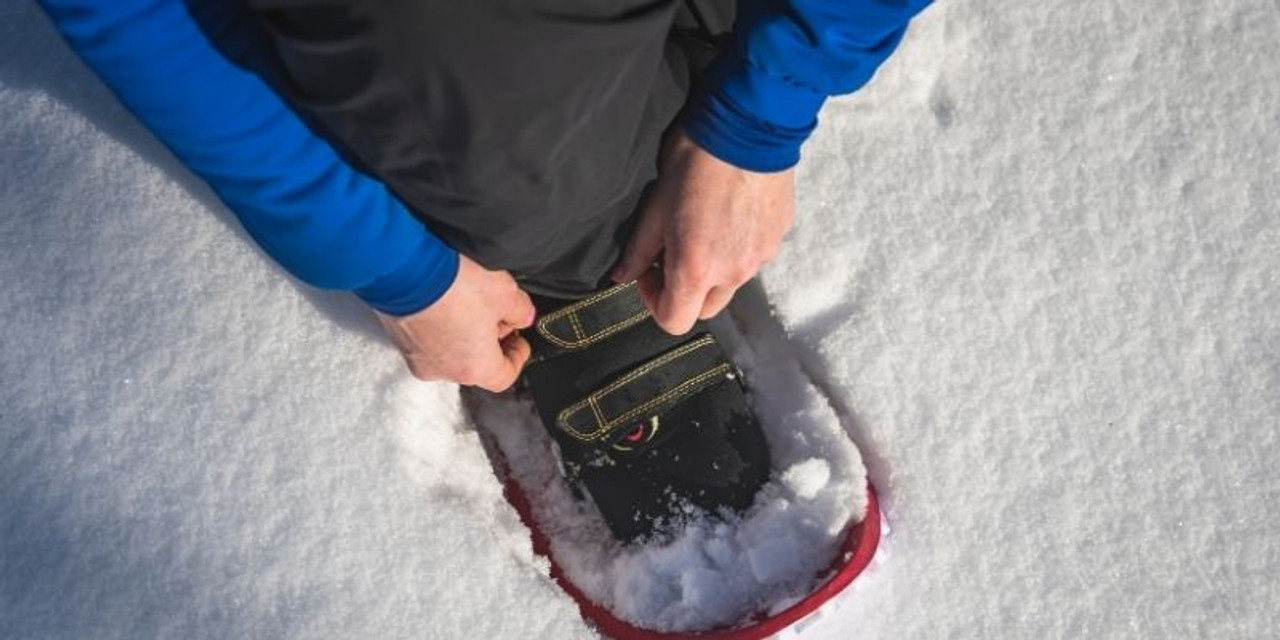What Kind of Shoes Do You Wear Snowshoeing?
Posted by Crescent Moon on Oct 20th 2020
Snowshoes come in different types for the terrain and your boots and other gear should match your specific snowshoe model. For challenging terrain, rigid and sturdy boots work well. Crescent Moon foam snowshoes work great for almost all terrain and are the perfect low-impact snowshoes.
Types of Shoes to Wear Snowshoeing
You can have the option of different types of shoes to wear while snowshoeing.
Snowshoes and Winter Boots:
If you are only an occasional snowshoer and you tend to travel on groomed terrain then a simple pair of winter boots can suffice. If you would wear those boots in the snow anyway then there is a good chance the boots can be worn with snowshoes. Regular winter boots may be stiff, heavy, and don’t breathe well. If you are going to be going out for a long walk then these may not be the best solution.
Snowshoes and Hiking Boots:
Hiking boots can be the best option for snowshoeing, as long as they are insulated and warm. Hiking boots can keep your feet dry despite the snow and give you good ankle support. They help your feet breathe and the design creates a comfortable and natural stride.
Snowshoes and Alpinism Boots:
For large expeditions or where the terrain is rough or icy, some may want to wear mountaineering boots. These boots can offer you good protection against humidity and cold but may not be the most comfortable option.
Key Considerations for Shoes to Wear Snowshoeing
A good winter boot will keep your feet dry and warm and will prevent you from unnecessarily expending energy and strength. A good and secure fit means your feet stay put within the boots. The sturdy upper part will allow you to attach the snowshoes without compressing your shoes or putting any pressure on your feet. A stiff sole will allow for optimal transfer of energy and properly bind the snowshoes to your boot.
Snowshoe Boot Warmth:
In the winter, you need to stay warm. Boots help you stay warm with a combination of a liner and insulation. The material traps heat to your body and keeps the cold out. In order to save weight, manufacturers use synthetic materials. On some models, you may find that there is a reflective liner in order to further increase the warmth. Your blood needs to circulate in order for your feet to stay warm so there should be sufficient room in your boot.
Snowshoe Boot Waterproofing:
Boots for snowshoeing need to be waterproof. The sole usually acts as a bottom layer and the material on the top repels water. Many boots have a combination of both synthetic material and leather in order to help with breathability. The tongue of the shoe is important for keeping water out. If moisture does get into your shoe then your feet will be cold, depending on the liner. A liner from sheepskin or felt will continue to insulate even when wet.
Snowshoe Boot Comfort and Fit:
The proper fit is not only important to the comfort of the shoe but also to provide protection for your toes and ankles. Boots should cover and secure the ankle. The deeper the snow, the higher the shaft needs to be in order to keep out snow. Full height to the knee is overkill since the purpose is to prevent you from sinking too deep into the powder. If your feet move around in the shoe too much then you will tire out faster while snowshoeing. You need enough room in your shoe to have thicker socks and to maintain circulation.
Snowshoe Boot Stiffness and Stability:
A non-compressible and sturdy upper is needed so you can fit your snowshoe bindings securely and tightly and prevent your shoes from shifting. A soft toe box becomes squished by binding straps, which can cut off your circulation.
Snowshoe Boot Traction:
The traction will depend on your equipment. A rigid and thick sole helps transfer energy better. Winter boots usually have a sole similar to a snow tire with a large surface area, sticky rubber, and deep lugs.
Snowshoe Boot Extras:
While extras aren’t necessary, they can be nice to have. Manufacturers can make it easy to get in and out of boots with a quick lace system. Insoles may be removable to help dry out shoes. On some models, you can find ways to attach gaiters and features that help with snowshoes, such as toecaps. Crescent moon booties add another layer of protection against cold, snow and wetness.
